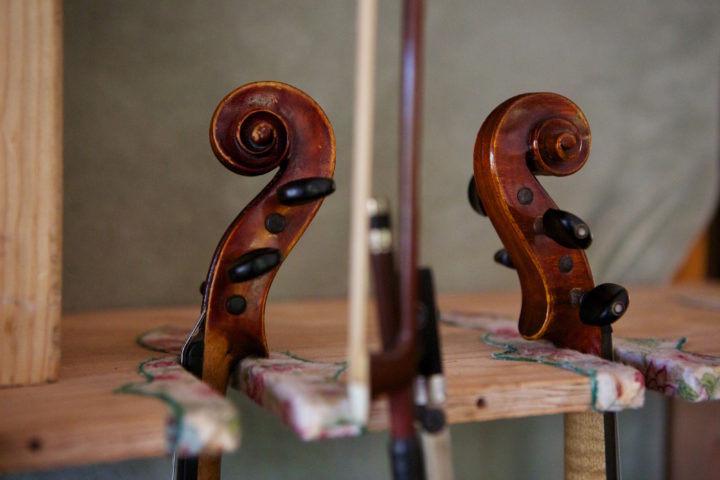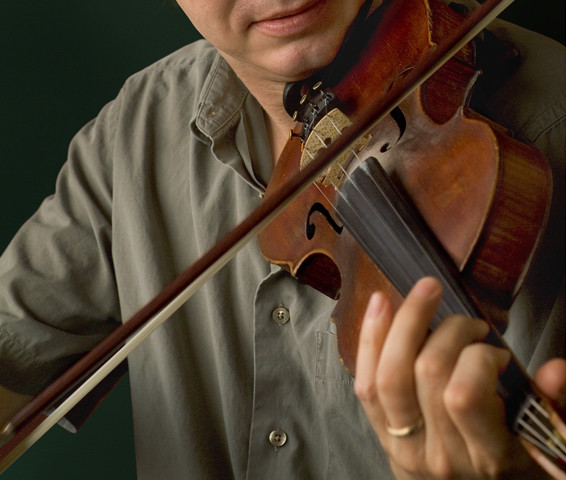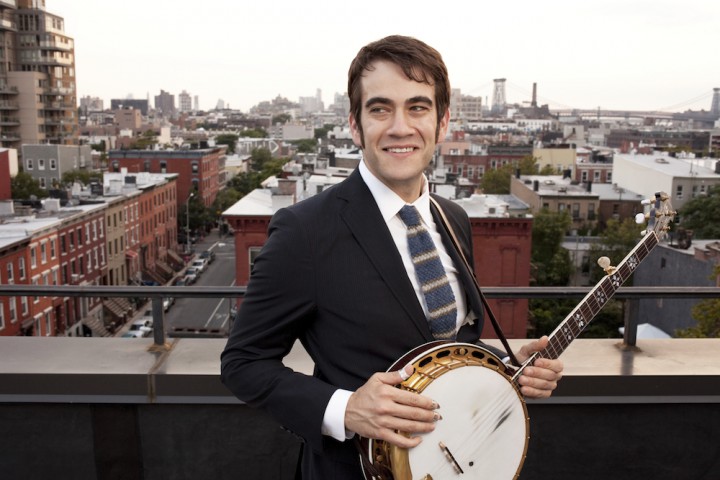Back in 1965 a trio of eccentric Scottish bards known as the Incredible String Band first appeared in the clubs of Glasgow playing a mixed bag of traditional British folk, Uncle Dave Macon and old jug band tunes played on banjo, fiddle, mandolin, harmonica and guitar. They were soon discovered by producer Joe Boyd and cut their self-titled debut album for Elektra Records. Banjoist Clive Palmer then lit out for Afghanistan and Robin Williamson and Mike Heron forged on as a duo. By 1967 they recorded their second album, The 5000 Spirirts or the Layers of the Onion gushed with ethereal lyrics and melodies spiced with an array of Indian, Arabic and Chinese instruments that profoundly resonated with the hippies.
For The Hangman’s Beautiful Daughter, their third album, the duo was joined by their demure girlfriends, Rose and Licorice on vocals, percussion and bass. A loose “anything goes” atmosphere of experimentation and inspired amateurism pervaded the sessions. But magic prevailed and the album soared to the top five on the British pop charts, ultimately inspiring Robert Plant of Led Zeppelin fame to crow the praises of Williamson’s singular vocal style.
In an old song book of their early material transcribed by guitarist Happy Traum, Robin scribbled a brief autobiography stating he was educated in “the school of life,” and has been a professional musician since age 17, back when he was “rushing around Britain with a guitar” as he sang in “First Girl I Loved.” But perhaps even more telling was his comment, that “music is prayer — everything else interesting in an infinite sort of way.”
An artful documentary about the String Band entitled Be Glad for the Song has No Ending, portrays Mike and Robin along with a group of their wild friends in elaborate costumes improvising a pagan dance ritual back in the woods. Another scene captures Heron, a better than the average guitarist turned proficient sitar twanger and Robin on guitar, along with Rose on bass and Licorice on tamboura. By the end of “The Iron Stone,” the song, not surprisingly, turned into a mad rambling hippie jam, a swirling sonic cauldron of Celtic blues over which Williamson’s vocal incantations bend, twist and soar.
On his latest offering,The Iron Stone, his third for the ECM label, Williamson reworked two old Incredible String Band gems including the title cut, which, as Robin pointed out “has an altogether different flavor” than the original version that appeared on 1969’s Wee Tam.
“Mat was playing a mandola while I played a thing called a Mohan veena. It’s a guitar with extra sympathetic strings, played with a slide. It was an instrument I found at the studio that I picked up and had a go with it. I’m not really sure what it was tuned to C, I think. I just fooled around with it and that’s what happened,” Robin laughed. (The veena that Robin described was designed by the Hindustani virtuoso Pandit Vishwa Mohan Bhatt.)
Themes of melancholy and reflection are prevalent through-out the album, whether Robin wrote the lyrics himself or composed music inspired by the verse of John Clare, Thomas Wyatt, Ralph Waldo Emerson or Sir Walter Raleigh.
“Those were Walter Raleigh’s last words,” Robin said referring to “Even Such Is Time.” “He was saying goodbye to the world. He had this wry little comment at the very end, ‘From this grave this earth, this dust, my god will raise me up, I trust,’ which I love. Life is so sweet, so poignant, and so brief. These songs are not sad, not really, they’re about how precious the experience of being alive is. To me, it’s kind of a Buddhist record. I’m sixty three now so naturally I often think about these things.”
One of the record’s stand-out songs, “Political Lies” addresses some of the issues and problems that continue to plague us these days. “These things have got an unfortunate way of still being with us,” Robin said wearily. “That was a straight song more than an improvised piece. I wrote it in 1984 when my son was born. I’d gone back to Edinburgh and the song was written on the banks of the Union Canal, which was nearby to where we were staying at the time. I was walking along the canal, thinking about trying to go back to where I was from, but it’s rather an impossible thing to do.”
Many of Williamsons’ songs are so ethereal and free in structure that one must wonder if the instrument he’s playing at the moment doesn’t dictate whatever shape the composition takes. What exactly is his process?
“Well, I’m doing several different things,” Robin explained. “Much of the work I’m doing for ECM is totally free form and improvised. It usually starts with the text, whether the words are by me or someone else, or literary works from long ago. I try and let the music flow out of that. Sometimes there are songs with chords. But writing a song is a completely different matter. You have to sit down and start with words or a tune. The writer that I really loved was Jack Kerouac, but being Scotch I was never going to be Jack Kerouac!”
Yet it seems that Robin, with this recording has come closer to the source of his original inspiration than ever before, blending stream-of-consciousness beat-style lyrics with elements of Celtic music and free jazz. His flowing harp has a cosmic quality, reminiscent of Alice Coltrane while the more fragmented passages recall Albert Ayler’s abstract spirituals (although certainly more gentle).
“I loved the free voice he had,” Williamson said of the late, great free jazz saxophonist. “The first free jazz I’ve come in contact with was when I met these guys at ECM that producer Steve Lake introduced me to [his current band-mates Mat Maneri, Barre Phillips and Ale Moller]. And Kerouac had that free voice as well. There’s something very Celtic about it actually. It goes back to the bards and the inspired voice of prophecy which has spawned a whole category of literary music. Back in the eighties I started telling stories and used the harp as accompaniment to my own storytelling. I was telling traditional tales and prose and Celtic bardic material.”
Robin’s best work of this period came with 1981 Songs of Love and Parting which included the stunning ode “For Mr. Thomas.” It’s a beautiful album but not always easy to listen to as it is emotionally quite intense. Although I love the album I don’t play it very often. It’s on par with Pink Moon by Nick Drake or a Townes Van Zandt record. Like Billie Holiday, just one earful put a different spin on your day.
“There’s something transformative about the power of suffering that you find in Billie Holiday’s music,” Robin pointed out. “But at this moment my life is so much about joy. Although some of my music might appear sad, it’s not meant to be, it’s really about joy.”
Spiritual music comes in a wide variety of forms from driving gospel, to the relentless rhythms of trance, to the alap (the spacey intros of Hindustani ragas), to the Irish aire, which gives the music a pastoral feel and allows the musicians to improvise and express themselves freely without the constraints of strict tempo.
“Irish pipes employ aires and there’s no structure to an aire,” Robin explained. “You can’t write it down in bars. The pipes have a beautiful fluting melody and are perfect for improvisation with a lot of decoration but the harp has all that as well.”
Robin’s odyssey with the harp back in 1980 after having worked with Sylvia Woods in the Merry Band (Williamson’s post Incredible String Band group that performed and recorded for the Flying Fish label in the late seventies/early eighties). Robin then took up the harp himself, having fallen in love with the sound of the instrument. He took a couple basic lessons from Sylvia and then as with all the instruments Robin’s played over the years, he learned the harp, “by just havin’ a go.”
“I don’t really play the harp the officially correct way,” Williamson confessed. “I just evolved my own style of playing it. The idea, really, is to let the instrument find you and the only way to do that is to keep playing that instrument and eventually its own voice comes through you.”
In addition to the harp Robin has lately been focused on the Hardangar fiddle from Norway. With its additional sympathetic strings, the instrument allows him to explore a wide variety of tunings.
“The fiddle I have was made in 1910 by a guy who was in jail. It’s a beautiful instrument. He had a lot of time to work on it and decorate it,” Williamson chuckled. “I’m also playing the big [low D] whistle quite a bit. And I still fool around with the guitar. I play a Taylor and mainly use a C, G, C, G tuning with a D on top. I used to use so many different tunings that when I go back to my old work from the sixties I can’t remember how I played it! It was all over the place.”
Robin often employs open tunings on his guitar, giving him the freedom to create fresh chords and tones while breaking down and dispensing with the well-worn patterns and song structures that often limit musicians.
“Back in the ’60s, I was one of the first people to have a go at guitar tunings in a big way. A lot of the different instruments that I used with the Incredible String Band I couldn’t play very well, like instruments from Morocco [the gimbri] which I used just to make different noises. I have been fooling around a bit with tunings on the harp too. My harp has thirty four strings with a C on the low end. I tune it traditionally like a piano. But it doesn’t have all the black notes. You’ve got to set that up. It’s built by Triplet an American San Luis Obispo.”
Williamson also still plays plenty of mandolin as well as his old Gibson mandocello. “The mandocello is wonderful for so many things. Melodies just flow out of it. All the mandolin type instruments make me think Irish. But then I think Irish on the harp a lot as well.”
“I first met Robin in New York in 1968 at the Chelsea Hotel,” recalled Malcolm LeMaistre who replaced Rose Simpson in the String Band in 1971. “He was already an accomplished multi instrumentalist and seemed to have the facility to play any instrument he picked up, although keyboards where not his strength. Firstly Robin was an astonishing guitar player, staggeringly versatile and adventurous, probably the best I have ever encountered. I know some of his Scottish contemporaries, Bert Jansch for one, are rightly feted but they were specialists and it was Robin’s very adventurousness with other instruments that led him to be underrated as a guitarist. Because Robin was a combination of master guitarist and has a restless mind, he found moving to another instrument easy. Robin was a wild fiddler, rough but virtuosic, trying stuff that other fiddlers could only dream of. Sure, sometimes it didn’t work but when he started using amplifiers and effects there was a moment of opportunity for him to be the Jimi Hendrix of the fiddle. But it slipped by and he moved on to the harp. I think his rather unconventional approach has perhaps made him few friends amongst the harp fraternity but I believe he is a master, a true bard. I think there can rarely have been a multi instrumentalist like Robin in this world and maybe someone will one day say so.”
Over forty years and nearly as many albums later, there is no sense of Williamson slowing down or repeating himself. He continues to stretch the boundaries of acoustic music with little or no concern that people continue to find his music bewildering or challenging.
“I don’t think he bothered with the rules too much. He had a fearless approach to music,” LeMaistre continued.“I believe that along with Mike Heron’s more grounded pop sensibility and beautiful songwriting, the String Band, before I joined, created some of the most astonishing songs and music in the history of music and that was in no small part due to Robin’s multi instrumental ability. And then there are his lyrics… When I was working with him he always carried a notebook and was constantly writing things down. As well as reading a lot. He had a huge range of knowledge about Celtic history and mythology and of course, an amazingly fertile mind. I learnt a great deal from him,” Malcolm recalled fondly.
“I like to shift it over this way and that way. It’s nice to stretch it a bit,” he laughed.
When I spoke with Robin by phone he was back home, in Wales, having recently returned from a tour of the continent with guitarist John Renbourn of Pentangle fame. Williamson hasn’t performed in the states for nearly a decade.
“It’s hard to come and go now. I don’t have a green card anymore,” he said, sounding a bit perplexed. “For nearly twenty years I was based in America [Los Angeles] but for the last ten years or more I’ve been based here, in Wales and since the world has become much more complicated its hard to take big large harps on airplanes. My harp weighs over ninety pounds in its flight case and for me to carry it is getting difficult as I’m getting old. For most of the touring in England and Europe we drive, seven hundred and fifty miles from Paris to Vienna, a twelve hour drive at German speed! Once you’re on that landmass you could drive all the way to China I suppose…” he chuckled.
With all the changes in the music business and the increased difficulties of touring most musicians of Robin’s generation have hung up their rock and roll shoes by now. So what keeps the intrepid troubadour going?
“It’s a faith in the wonderful nothingness from which we spring and the unknowable mystery into which we are going,” he chuckled. “These days I’m working as a duo with my wife Bina, who plays the bowed psaltry for the melody. She also sings, plays autoharp and percussion. That music might be described as a bit more devotional. It’s of no particular faith but kind of spiritual, devotional songs and stories that celebrate being alive. There’s a lot of spirit in rock ‘n’ roll in its various forms, ranging from magic to devotional to the mysterious. And there’s a lot of gospel in rock ‘n’ roll as well.”
Listening to The Iron Stone one gets a distinct sense of the yearning of the human soul in Robin’s music.
“Well, all of us are yearning for that mysterious place we once came from,” he said. “I don’t know about you, but I often feel a bit marooned in the world. There’s a word in Welsh for it – hiraeth. It means longing for something, but you’re not quite sure what. Like you’re homesick for someplace you’ve never been. I had a wonderful dream a few years ago. I was in a beautiful red empty desert, a Native American holy place and this wise man was sitting there beside this rock. I sat down and told him that I was ‘very, very happy here. How am I gonna get back here when I wake up?’ I asked. And he said, ‘Don’t worry Robin, you never left!’ That meant something to me at the time.”
Why then does he think that so many people continue to look for solace in music?
“It’s a mystery. Why does music effect the emotions? I don’t know the answer to that. The traditional Indian answer is that the interval between the notes and the drones is similar to what goes on between the soul and the body. Our vibratory rate changes with our emotions and the limitations of notes against the drone in a raga produce emotions – anger, sorrow, happiness. That’s how they interpret it. To me it’s strange that musical notes should be emotive. But they are! And they have a certain magic which they used to call enchantment.”
If there’s any doubt that the old Incredible String wizard still believes in the power of song after all these years, his answer resounds profoundly within the lyrics to “There Is.”
“There is a music that will melt blood and bone” he intones, “that will wash away the rock of the mind.”


